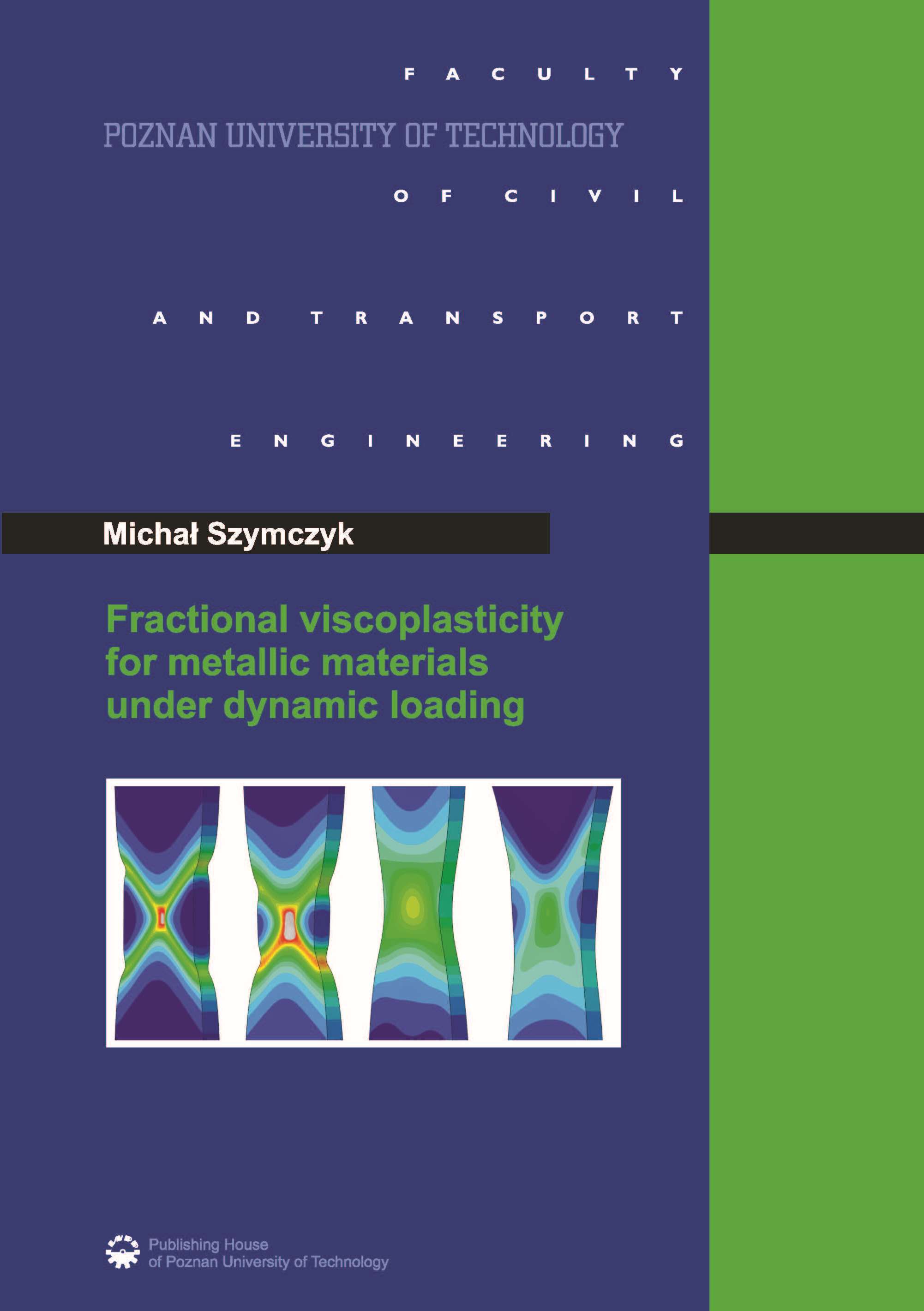Fractional viscoplasticity for metallic materials under dynamic loading
Fractional viscoplasticity for metallic materials under dynamic loading
Rate-dependent material models are used in civil engineering when a dynamic response of structure has to be examined. These models, used in conjunction with, e.g. soft-ware suites for finite element analysis, provide a powerful tool for solving dynamic problems. An effective approach should include material properties such as anisotropy, non-locality and non-normality of the inelastic flow. The goal of this treatise is to develop a comprehensive mathematical model that could be successfully applied for special cases when high-strain-rate deformations in metals, are considered.
The Perzyna viscoplastic model in its extended constitutive form, which accounts for strain-rate hardening, microdamage mechanism, thermo-mechanical coupling and the fracture criterion, was chosen for this research. Fractional derivatives were used for the aforementioned model to introduce the non-local and anisotropic properties. The numerical analyses were conducted at the material point level to evaluate the impact that the fractional parameters have on the dynamic material response. Next, the dynamic tests were carried out for a full three-dimensional dog-bone specimen for various parameters and loading velocities. In this last case, the strain localization was observed and studied. Moreover, the evolution of the state variables in the Perzyna formulation was closely examined.
Results of the numerical analysis have shown that the fractional viscoplastic model exhibits non-locality, as well as, the anisotropy in the level and direction of deforma-tion. Moreover, the directional behaviour was also found in the dissipation of me-chanical wave energy. The anisotropy was also observed in the strain localization and deformation modes of the dog-bone specimen. The non-locality and directional depen-dence had an impact on the evolution of the state variables of the Perzyna model. In conclusion, the results reflect the one obtained in the available experimental studies.
Based on the above, the thesis of this dissertation, which stated that the fractional formulation of the viscoplastic model improves the description of metals behavior under dynamic loading, can be assumed to be valid.
The author of the monograph currently works in the field of data science and machine learning. The monograph is the author's Doctoral Thesis, which was approved, in 2020, by the Faculty of Civil and Transport Engineering of Poznan University of Technology under the supervision of Prof. Wojciech Sumelka and Dr Marcin Nowak. The author's fields of interest are computational mechanics and mathematical modeling.
ISBN 978-83-7775-625-6 (print)
ISBN 978-83-7775-626-3 (digital)
https://doi.org/10.21008/b.978-83-7775-626-3

Permission to use Fractional viscoplasticity for metallic materials under dynamic loading
under the terms of the Creative Commons Attribution-Alike 4.0 License (also known as CC-BY-SA), available at https://creativecommons.org/licenses/by-sa/4.0/
or any other language version of this license or any later version of this license published by Creative Commons.

